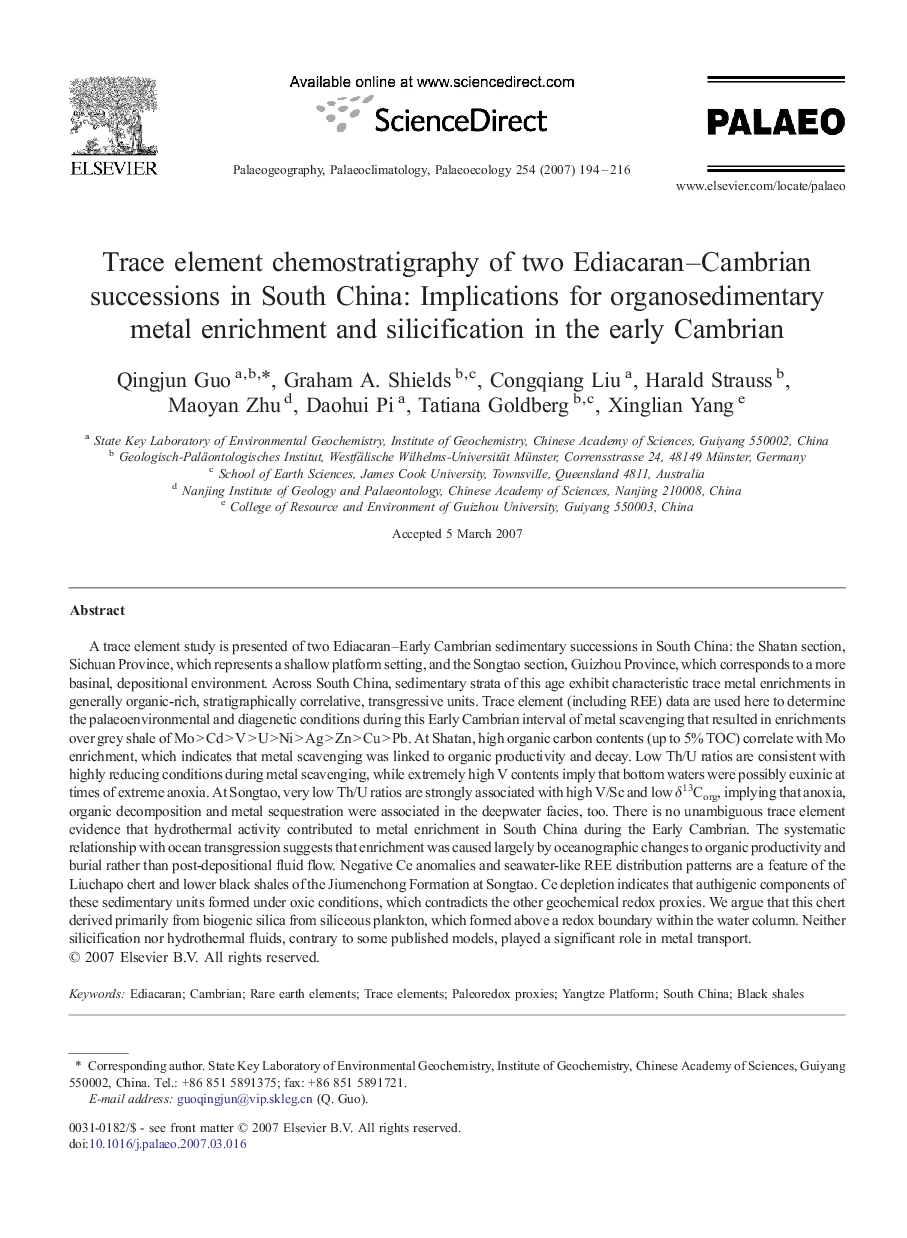| Article ID | Journal | Published Year | Pages | File Type |
|---|---|---|---|---|
| 4468769 | Palaeogeography, Palaeoclimatology, Palaeoecology | 2007 | 23 Pages |
A trace element study is presented of two Ediacaran–Early Cambrian sedimentary successions in South China: the Shatan section, Sichuan Province, which represents a shallow platform setting, and the Songtao section, Guizhou Province, which corresponds to a more basinal, depositional environment. Across South China, sedimentary strata of this age exhibit characteristic trace metal enrichments in generally organic-rich, stratigraphically correlative, transgressive units. Trace element (including REE) data are used here to determine the palaeoenvironmental and diagenetic conditions during this Early Cambrian interval of metal scavenging that resulted in enrichments over grey shale of Mo > Cd > V > U >Ni > Ag > Zn > Cu > Pb. At Shatan, high organic carbon contents (up to 5% TOC) correlate with Mo enrichment, which indicates that metal scavenging was linked to organic productivity and decay. Low Th/U ratios are consistent with highly reducing conditions during metal scavenging, while extremely high V contents imply that bottom waters were possibly euxinic at times of extreme anoxia. At Songtao, very low Th/U ratios are strongly associated with high V/Sc and low δ13Corg, implying that anoxia, organic decomposition and metal sequestration were associated in the deepwater facies, too. There is no unambiguous trace element evidence that hydrothermal activity contributed to metal enrichment in South China during the Early Cambrian. The systematic relationship with ocean transgression suggests that enrichment was caused largely by oceanographic changes to organic productivity and burial rather than post-depositional fluid flow. Negative Ce anomalies and seawater-like REE distribution patterns are a feature of the Liuchapo chert and lower black shales of the Jiumenchong Formation at Songtao. Ce depletion indicates that authigenic components of these sedimentary units formed under oxic conditions, which contradicts the other geochemical redox proxies. We argue that this chert derived primarily from biogenic silica from siliceous plankton, which formed above a redox boundary within the water column. Neither silicification nor hydrothermal fluids, contrary to some published models, played a significant role in metal transport.
